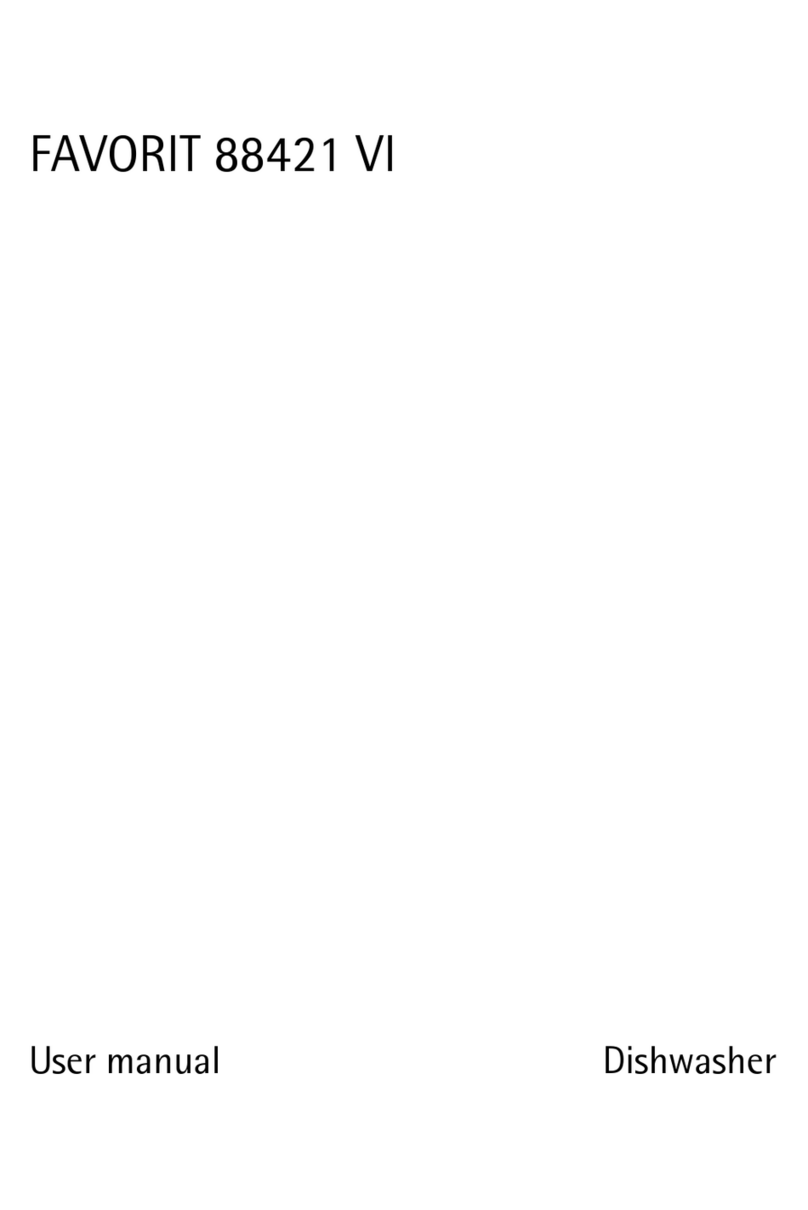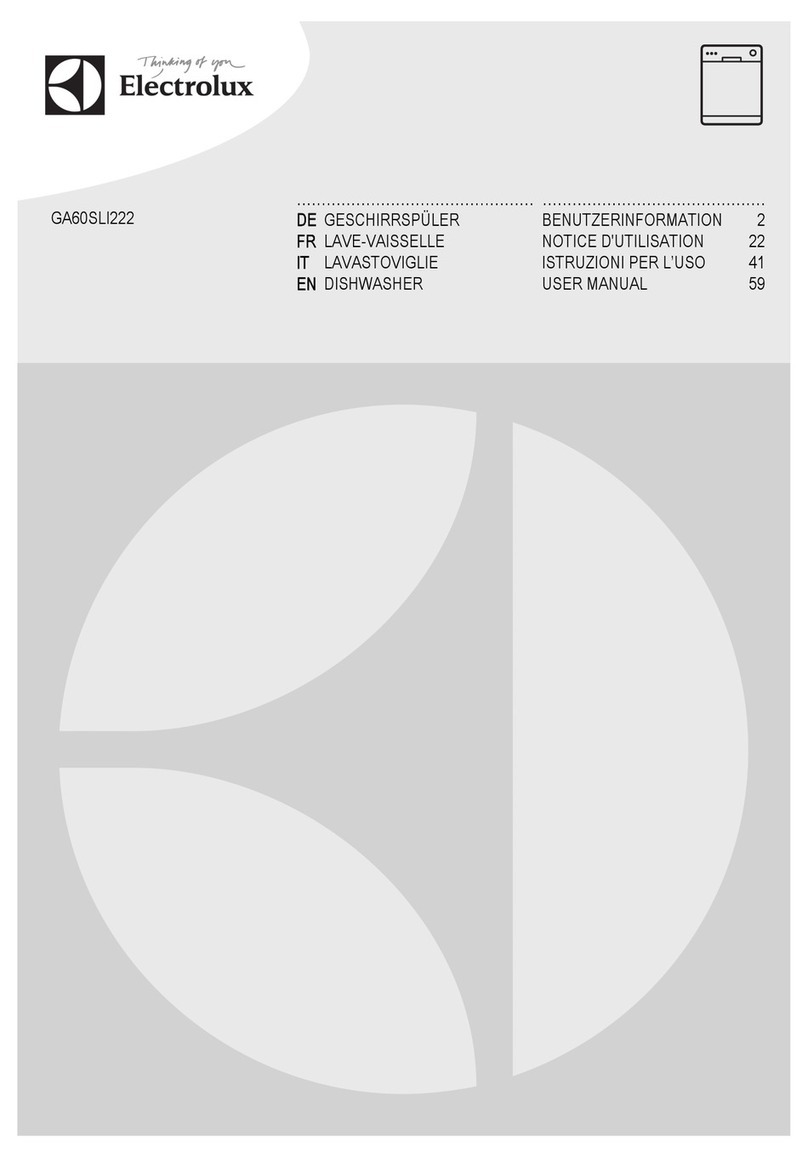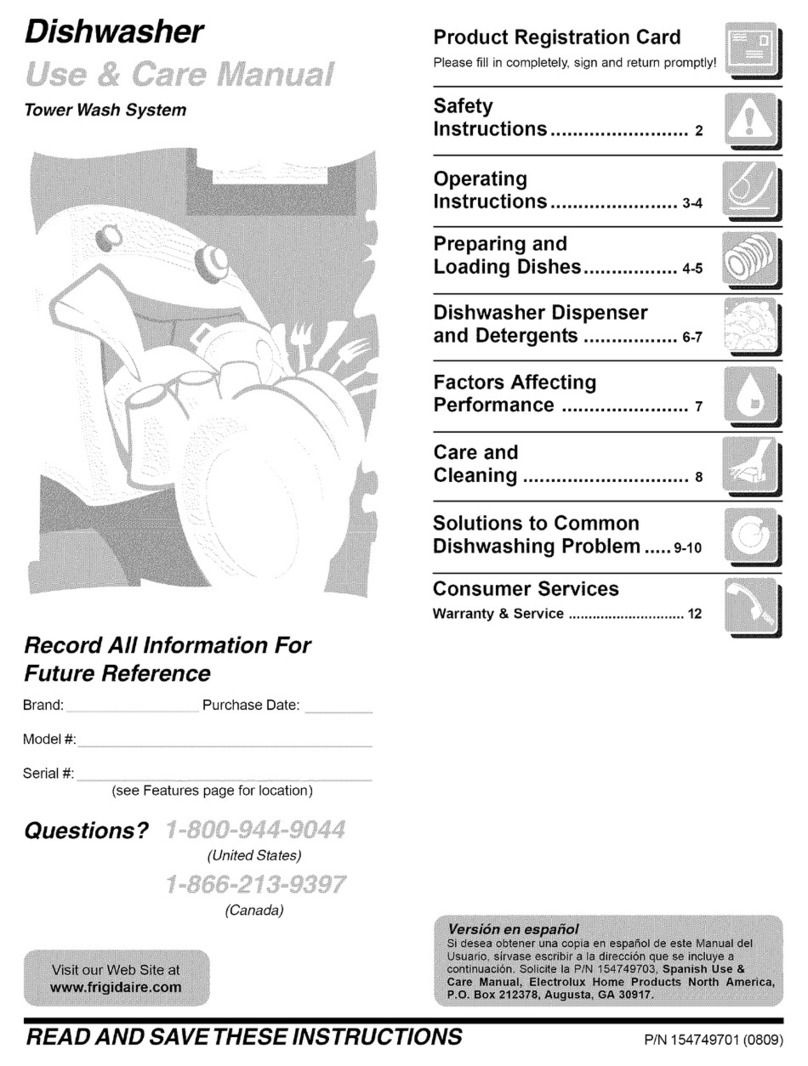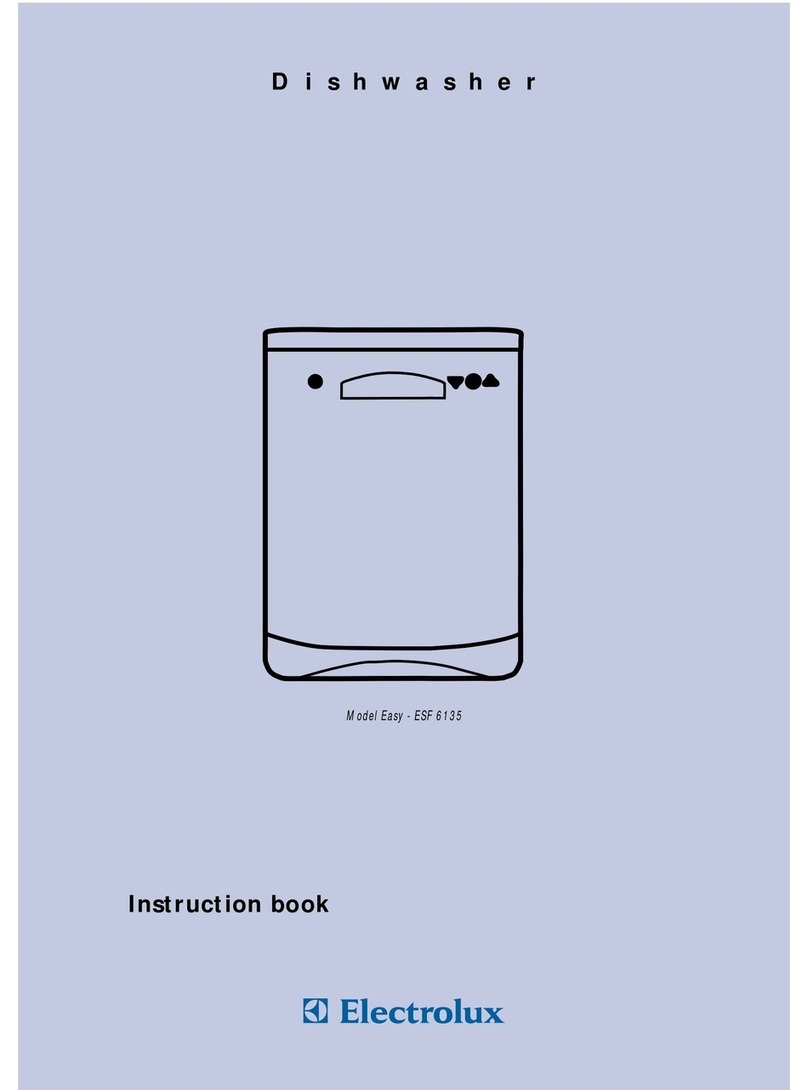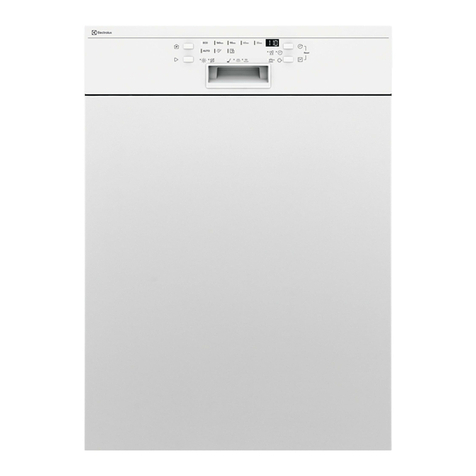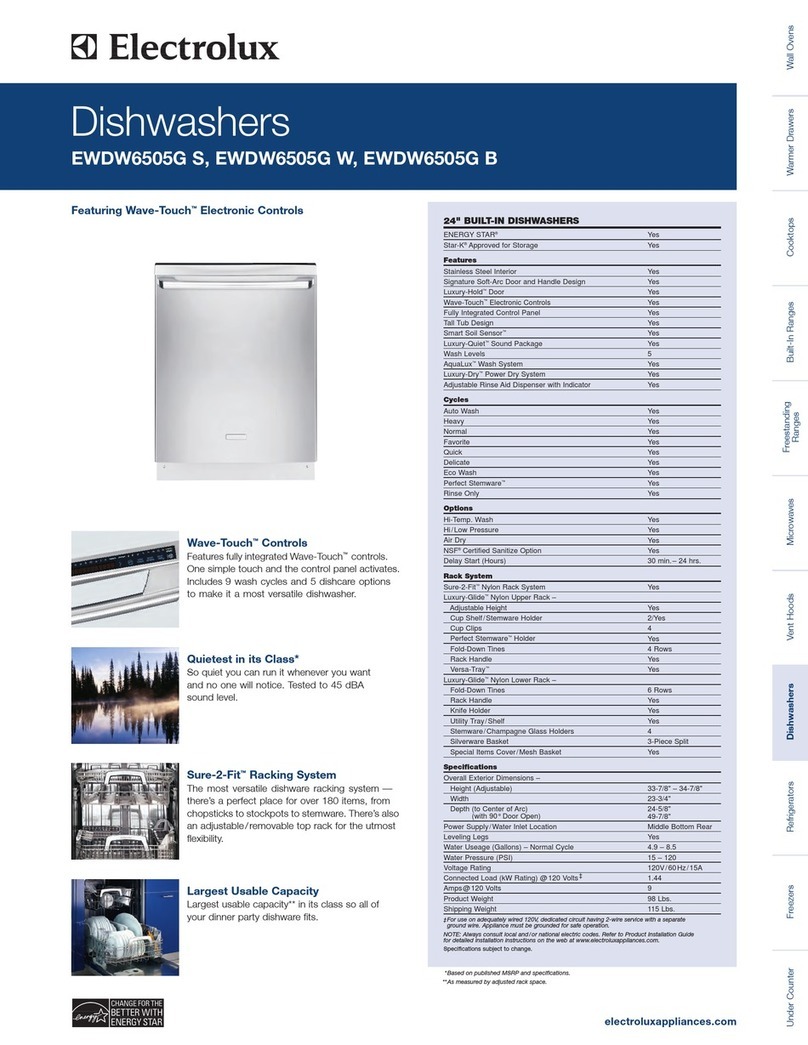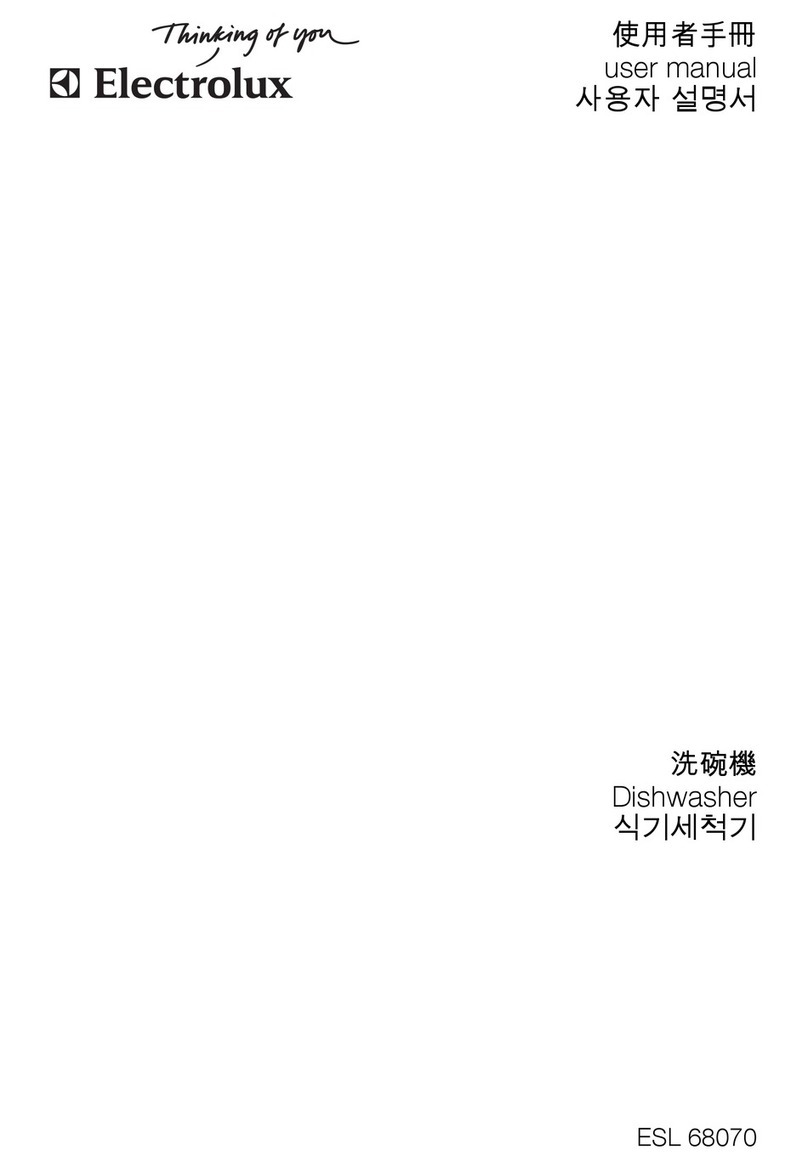27
Installation
●This appliance is hea y. Care should be taken
when mo ing it.
●It is dangerous to alter the specifications or
attempt to modify this product in any way.
●Care must be taken to ensure that the appliance
does not stand on the electrical supply cable.
●Any electrical work required to install this
appliance should be carried out by a qualified
electrician or competent person.
●Any plumbing work required to install this
appliance should be carried out by a qualified
plumber or competent person.
Child Sa ety
●This appliance is designed to be operated by
adults.
Children should not be allowed to tamper with the
controls or play with the product.
●Keep all packaging well away from children.
●Keep all detergents in a safe place out of
children's reach.
During Use
●Items that are contaminated by petrol, paint, steel
or iron debris, corrosi e, acidic or alkaline
chemicals must not be washed in this dishwasher.
●Under no circumstances should you open the
door whilst the appliance is in operation. Always
turn off the appliance before opening the door.
●Only use detergent specifically designed for use in
dishwashers.
●Long bladed kni es stored in an upright position
are a potential hazard.
●Long and/or sharp items of cutlery such as
car ing kni es must be positioned horizontally in
the upper basket.
●When finishing loading or unloading close the
door, as an open door can be a hazard.
●Do not sit or stand on the open door.
●Isolate the appliance from the power supply and
turn off the water supply after use.
●Care should be taken when cleaning the bottom
door seal and hinge area as any exposed metal
edges may cut if care is not taken.
●This product should be ser iced by an authorised
Ser ice engineer, and only genuine spare parts
should be used.
●Under no circumstances should you attempt to
repair the machine yourself. Repairs carried out
by inexperienced persons may cause injury or
serious malfunctioning. Contact your local Ser ice
Force Centre. Always insist on genuine spare
parts.
Conservation
In the interest o the environment:
●Materials marked with the symbol are
recyclable.
●Check with your local Council or En ironmental
Health Office to see if there are facilities in your
area for re-cycling this appliance.
●When the appliance is to be scrapped, cut off the
power supply cable and make the door closing
de ice unusable to pre ent young children from
being trapped inside.
●Help to keep your country tidy - use authorised
disposal sites for your old appliance.
Important sa ety in ormation
It is most important that this instruction book should be retained with the appliance or uture
re erence. Should the appliance be sold or trans erred to another owner, or should you move house
and leave the appliance, always ensure that the book is le t with the appliance in order that the new
owner can get to know the unctioning o the appliance and the relevant sa ety in ormation.
This in ormation has been provided in the interest o your sa ety. You MUST read it care ully be ore
installing or using the appliance.



